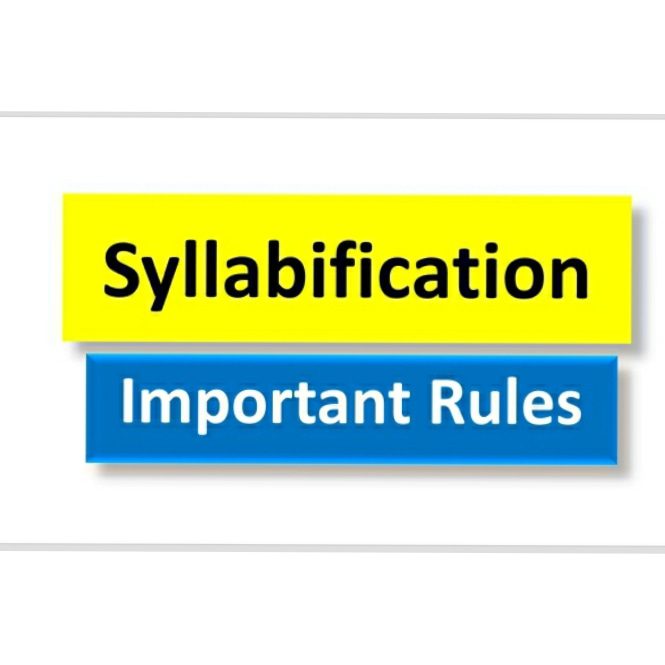What is syllabification? How to syllabify a word? What are the important rules for syllabification?
You will get answer to all these questions in this post. You are going to read about syllabification and rules with examples. Before knowing about the syllabification which is also known as syllabication, you must know about the importance of syllabification.
Importance of Syllabification
•Syllabification makes it easy to read new words. It becomes easy to read long words with the help of syllabification. It helps improving reading, speaking and pronunciation.
Syllabification
Syllabification refers to the process of division of words into smaller parts which are known as syllables. To break a word into small syllables is to syllabify a word.
It’s important for you to know about a syllable to understand about syllabification.
You can read about syllables in detail by clicking here.
Syllable
Syllable is a small unit of sound of a written or spoken word.
•It has at least one vowel sound.
For example-
Man has one syllable as it has one vowel sound but mango has two syllables as it has two vowel sounds.
Do not confuse vowel sounds for vowel letters. Sometimes we get only one vowel sound from two or more vowel letters.
For example:-
Beat
Here we get only one vowel sound from the letters ea.
Beauty /ˈbjuːti/
Here also we get only one vowel sound from the letters eau that is /u:/
School
Here also we get only one vowel sound from the letters oo that us a long vowel sound u:
Jeep
Here again we get only one vowel sound from the letters we that is a long vowel/i:/.
To understand these speech sounds and their symbols, click here.
Syllabification and Rules with examples
1. Never divide two vowels next to each other if they carry one sound.
• Examples-
• bread
•Treat,
•stool,
•route
2. When two consonants come between the two vowels in a word, divide the consonants to get the syllables.
Examples of this rule include
Candy- can/dy
window- win/ dow
custom – cus/tom
3. When there are more than two consonants together in a word, the syllables should be divided so that the blends stay intact.
• Examples
• en/trance,
• sub/tract.
• em/ploy
4. When there is one consonant between two vowels, divide the word after the first vowel.
Examples-
•Ti/ger (2)
•Lo/tus(2)
•A/ni/mal(3)
•Ro/Tate (2)
•Mi/nus (2)
•Te/le/cast (2)
•Pre/si/dent(3)
5. Subtract silent vowel letters to get the correct syllable
•Game
•Plate
•Choice
In this word CHOICE, letter e is silent in the end and we get only one vowel sound that is a diphthong from the letters oi.
All the above words have only one syllable as there is only one vowel sound. Letter e at the end is silent.
6. Divide compound words between the two base words.
•Bed/sheet
•Note/book
•Foot/ball
Remember these rules to syllabify a word to read and pronounce correctly in English.


I resally like what you guyss are usualy uup too. This type
oof clever worfk aand coverage! Keep up thee excellent woprks gguys I’ve added you guys tto my blogroll.
I have an interesting method I believe unique of using the IPA (British Received English) to simplify the search for all 44 Phonemic sounds when teaching foreign students in person and on line (Zoom) for example .It helps them to practice speaking individual words . If you are willing to look at this I may be able to co operate with you …